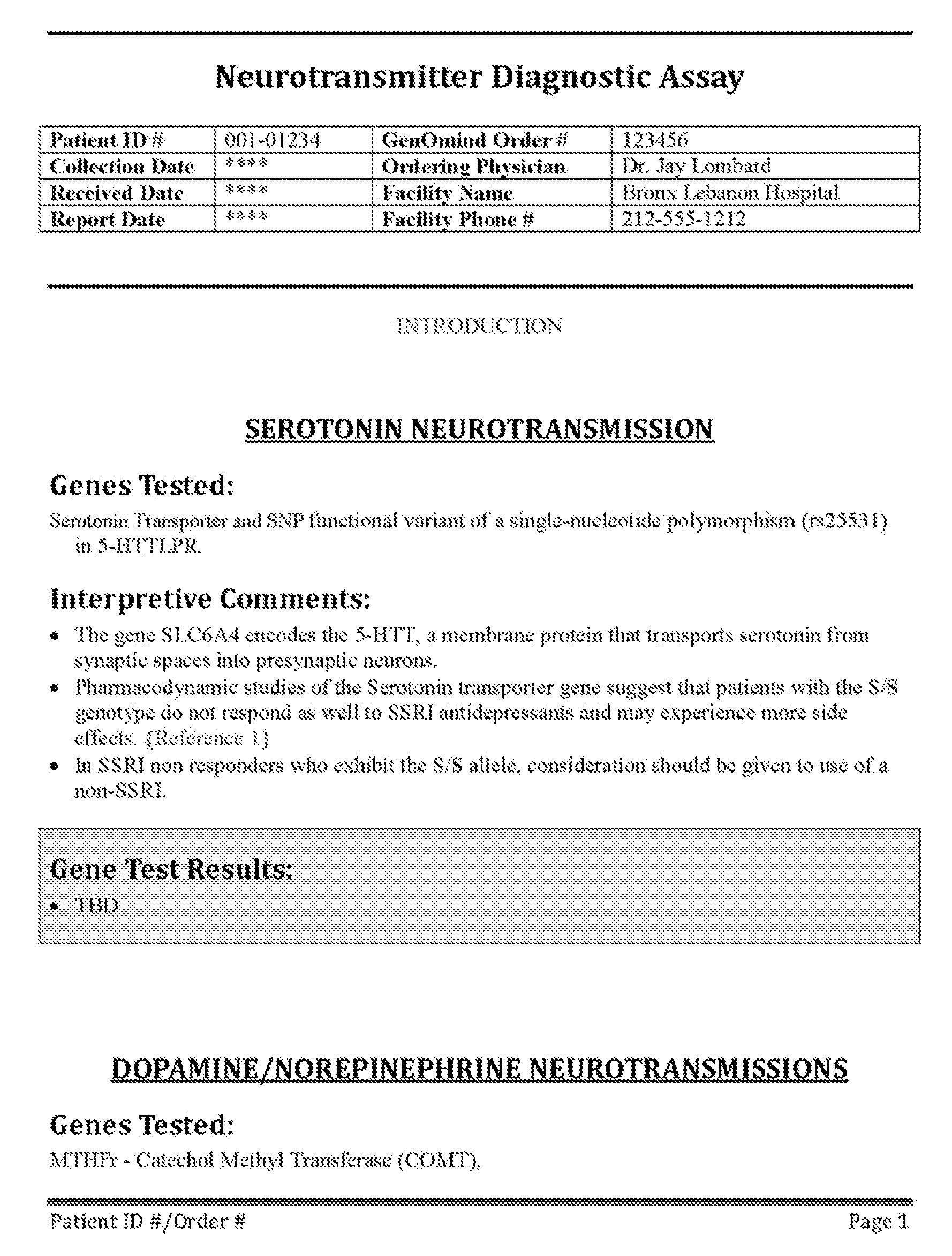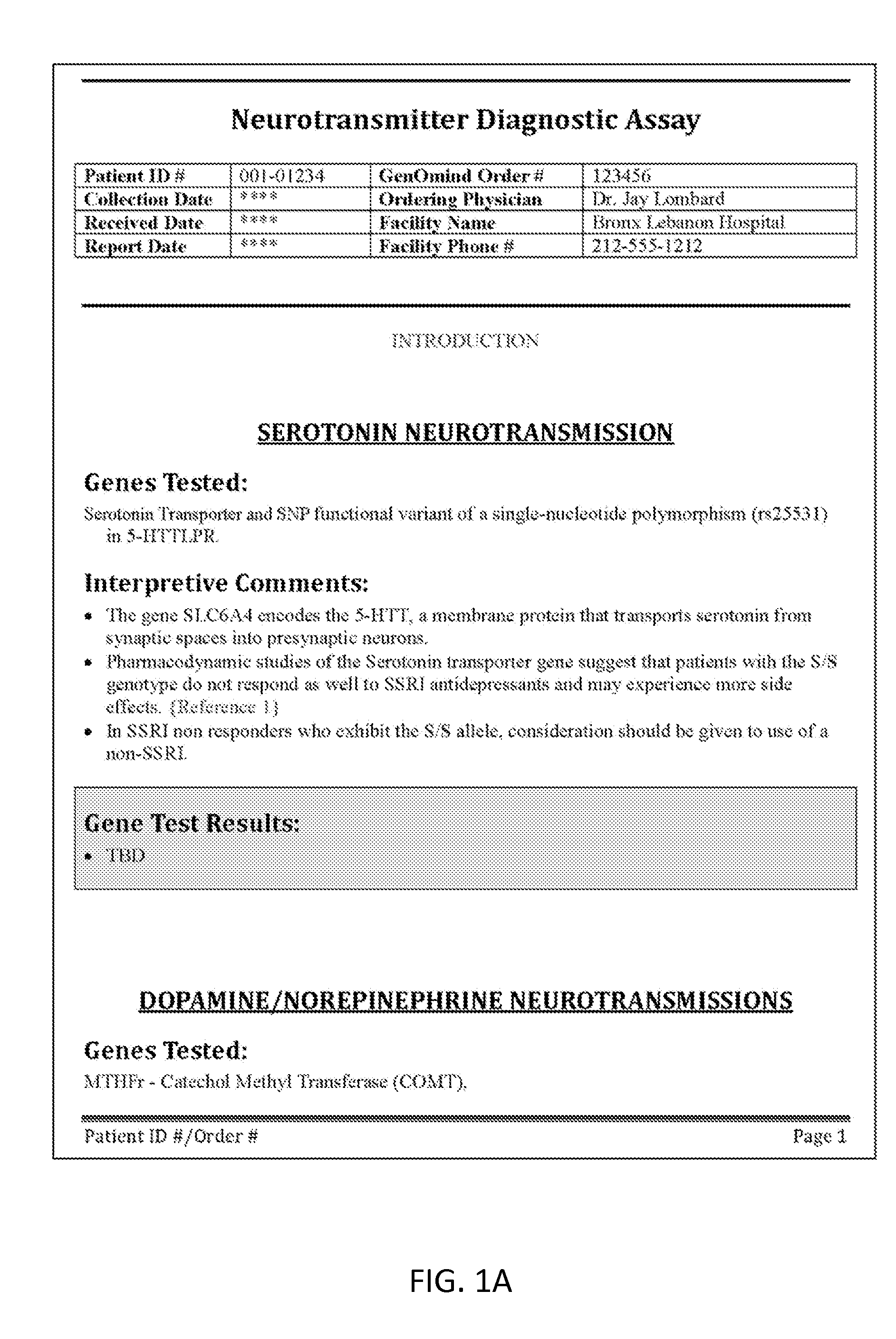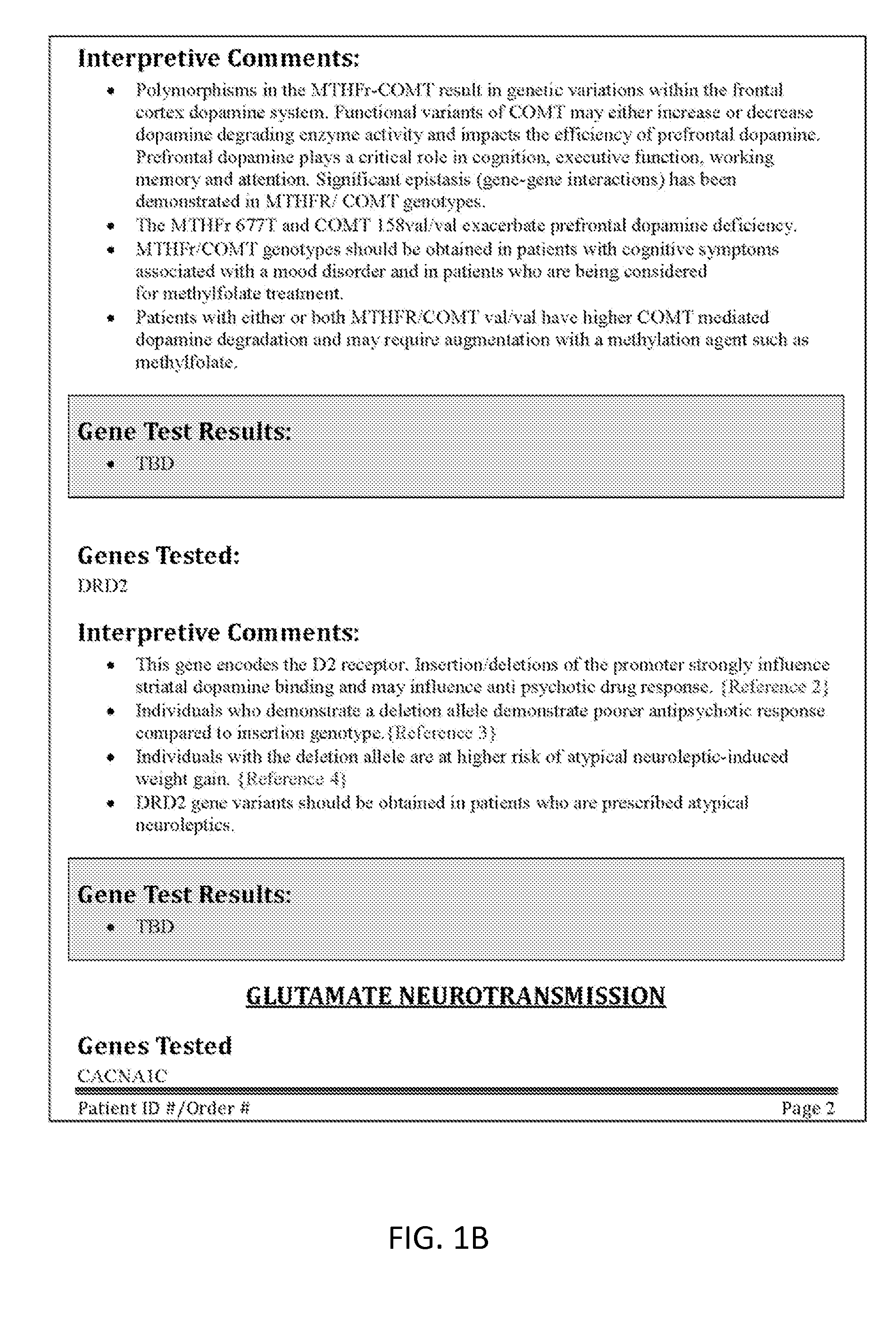Neuropsychiatric test reports
a neuropsychiatric and test report technology, applied in the field of personalized diagnostic reports, can solve problems such as the autonomic arousal axis and the dysfunction of this axis, and achieve the effect of improving diagnostic certainty
- Summary
- Abstract
- Description
- Claims
- Application Information
AI Technical Summary
Benefits of technology
Problems solved by technology
Method used
Image
Examples
example 1
Treatment Resistant Depression (TRD)
[0198]In some variations, the articles of manufacture described herein are generally reports including information of patient-specific biomarkers that is relevant to treatment of treatment resistant depression. The inventor has identified a small sub-set of biomarkers that may be important for understanding in order to best treat TRD. This sub-set of biomarkers may be selected from the four axes discussed above (including the three pharmacodynamic axes and the pharmacokinetic axis), and may represent a subset of biomarkers representing these axes. A patient's genotype for all or a major subset of these six members of this TRD epistatic group (e.g., five of the six, four of the six, three of the six) may provide sufficient information to a medical practitioner to accurately guide treatment. Although information about other genetic loci may be helpful, these six members may be of enhanced importance because they (alone and in combination) offer insi...
example 2
TRD report
[0214]The reports described herein may simplify the potentially complex and confusing application of personalized medicine for the treatment of depression (and particularly TRD) by providing a simplified and concise personalized diagnostic report that selects and organizes the relevant genotypic and phenotypic information in a manner that emphasizes only those aspects which are relevant to the treatment of depression (e.g., TRD); the report may also emphasize relevant (core) epistatic members, while omitting or separating out non-core genotype / phenotype information. The reports may also provide interpretive comments relevant to the drug response based on these core epistatic members. As described in greater detail below, these reports, and particularly the interpretive portion of the reports, may include an indexing or weighting system that provides a confidence level for the provided interpretive comments.
[0215]Thus, the dimensional assays described herein are best served...
example 3
Indexing / Weighting
[0227]As mentioned above, any of the interpretive reports described herein may include indexing or weighting of the interpretive comments. The various types of interpretive comments that may be included in the report include: physiological significance, association studies, current research findings, pharmacological implications, and the like. The information provided by the interpretive comments may be based on medical and scientific research, including both published and unpublished data.
[0228]All or a subset of the interpretive comments may be indexed with an indicator (which may also be referred to as an “index”) providing a confidence level for the interpretive comment. For example, in some variations the interpretive comments may include a description or mention of the results of one or more association studies relevant to the patient's biomarker test results. An index may provide weighting context by indicating the appropriateness of the association study to...
PUM
| Property | Measurement | Unit |
|---|---|---|
| neuropsychiatric disorder | aaaaa | aaaaa |
| emotional valence | aaaaa | aaaaa |
| ionic channel | aaaaa | aaaaa |
Abstract
Description
Claims
Application Information
 Login to View More
Login to View More - R&D
- Intellectual Property
- Life Sciences
- Materials
- Tech Scout
- Unparalleled Data Quality
- Higher Quality Content
- 60% Fewer Hallucinations
Browse by: Latest US Patents, China's latest patents, Technical Efficacy Thesaurus, Application Domain, Technology Topic, Popular Technical Reports.
© 2025 PatSnap. All rights reserved.Legal|Privacy policy|Modern Slavery Act Transparency Statement|Sitemap|About US| Contact US: help@patsnap.com



